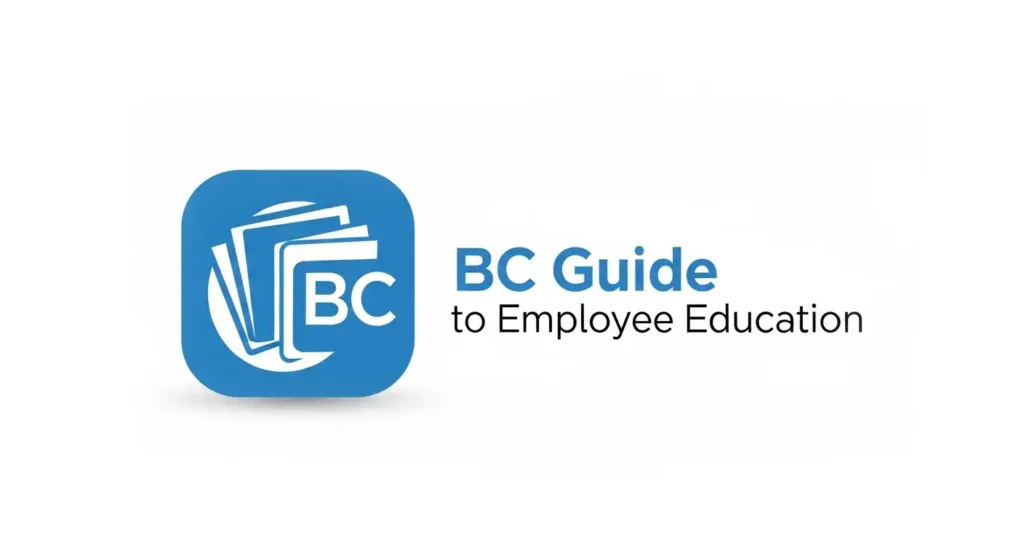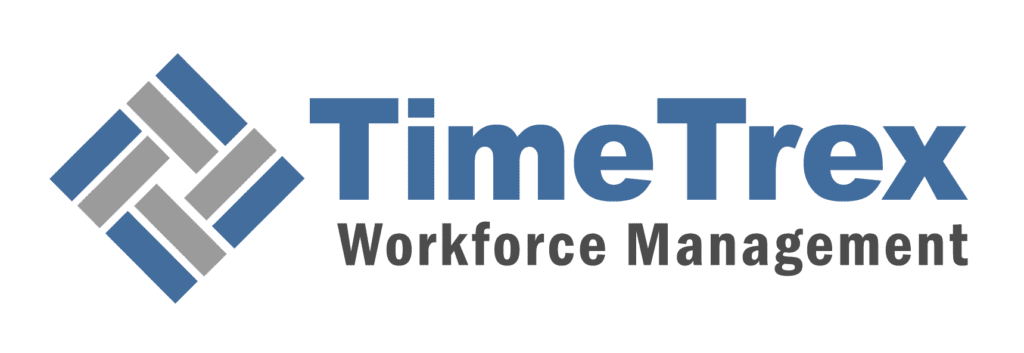
Employee Education Funding in British Columbia: Grants, Tax Credits, and Strategic Opportunities
Discover the complete guide to funding employee education in British Columbia. This article covers all BC employee training grants, tax credits for apprenticeships, and strategic opportunities for small businesses. Maximize your reimbursement for employee education and workforce upskilling in BC by understanding key programs like the B.C. Employer Training Grant (ETG) and the B.C. Training Tax Credit. Learn how to navigate the application process, meet eligibility criteria, and leverage sector-specific funding for technology, tourism, and skilled trades to build a competitive and skilled workforce.
Table of Contents
- TL;DR
- The B.C. Employer Training Grant (ETG): A Detailed Analysis
- Leveraging Tax Credits for Apprentice Training
- Sector-Specific and Targeted Funding Opportunities
- The Broader Funding Ecosystem: Context for Employers
- Strategic Synthesis and Recommendations
- Appendix: Directory of Key Contacts and Resources
TL;DR
Purpose and Scope
This report is a strategic guide for British Columbia businesses to secure reimbursement for employee education costs. It analyzes provincial grants, federal-provincial programs, and tax credits designed to foster a skilled workforce in BC.
Primary Funding Avenues
The two main programs for BC employers are:
- The B.C. Employer Training Grant (ETG): This is the flagship program, reimbursing employers for up to 80% of training costs. It's capped at $10,000 per employee and $300,000 per employer annually, making it the most significant program for general upskilling.
- The B.C. Training Tax Credit: This is a refundable income tax credit specifically for hiring and training apprentices registered with SkilledTradesBC. It offers enhanced rates for hiring Indigenous individuals or persons with disabilities.
Key Strategic Imperatives
Success depends on proactive planning. The ETG's finite budget is often allocated early in the fiscal year, so applying as soon as the portal opens (typically in spring) is critical. A smart strategy combines the broad ETG for general training with the targeted Training Tax Credit for apprenticeships.
Targeted Opportunities
Beyond the main programs, funding exists for specific sectors like Technology, Tourism, and Forestry. Significant incentives also support training for Indigenous individuals and persons with disabilities.
The B.C. Employer Training Grant (ETG): A Detailed Analysis
The B.C. Employer Training Grant (ETG) stands as the cornerstone of the provincial government's strategy to support workforce development. As a broad-based, cost-sharing program, it offers a direct and substantial reimbursement for a wide array of training initiatives. A thorough understanding of its structure, financial model, and application process is essential for any B.C. business seeking to offset the costs of upskilling its employees.
Program Mandate and Governance Structure
The ETG's core objective is to help British Columbians access the skills training necessary to adapt to the evolving demands of the labour market. The program is designed to encourage employer investment in skills training, aiming to increase job security or lead to "better jobs" with higher pay or promotions.
This provincial program is B.C.'s implementation of the national Canada Job Grant (CJG) framework, funded by the Government of Canada through the Workforce Development Agreement (WDA). It is managed provincially by the Ministry of Post Secondary Education and Future Skills, with WorkBC as the primary public access point.
Effective June 1, 2022, the program was simplified into a single application process with a consistent reimbursement rate of 80% for all applicants, significantly reducing the administrative burden on businesses.
Financial Framework: Understanding the Reimbursement Model
The ETG operates on a clear cost-sharing and reimbursement model.
Get 80% of eligible training costs reimbursed by the province.
Receive up to $10,000 per employee per fiscal year.
Access up to $300,000 per employer per fiscal year.
Cost-Sharing Formula
The grant reimburses employers for 80% of eligible training costs. The employer must contribute the remaining 20% as a direct cash payment, not an in-kind contribution. This ensures employers are meaningfully invested in the training outcomes.
Funding Caps
Financial limits are clearly defined:
- $10,000 maximum per employee per fiscal year (April 1 - March 31).
- $300,000 maximum total per employer per fiscal year.
Reimbursement Process
The ETG is a reimbursement-based grant. This has important cash flow implications. The employer must pay 100% of all training costs to the provider upfront. After the training starts and payment is made, the employer can submit a claim for the 80% reimbursement. This claim must be submitted within 30 days of the training start date.
Eligibility Deep Dive: Qualifying Your Business, Employees, and Training
Applicants must meet stringent criteria across three domains. The grant is designed for B.C. businesses ready to invest in their people.
Employers
- Private or non-profit sector employer in B.C.
- Self-employed individuals also qualify.
- Must be operational for at least one year.
- Must have a valid Business BCeID.
- Must contribute 20% of training costs.
Employees
- Canadian citizens, permanent residents, or protected persons.
- Can be new hires (unemployed) or existing staff.
- Must be directly employed by the applicant.
- Cannot be temporary foreign workers.
- Cannot be international students.
Employer Criteria
- Location and Type: Must be an employer (private sector, non-profit, municipality, Indigenous government) or self-employed individual operating in British Columbia.
- Operational History: Must be fully operational for at least one year. This is typically verified through the B.C. Corporate Registry or with CRA Notices of Assessment.
- Good Standing: Must be in good standing with the Province of British Columbia.
Participant (Employee) Criteria
- Residency and Work Status: Participants must be Canadian citizens, permanent residents, or protected persons under the Immigration and Refugee Protection Act (Canada) who are legally entitled to work in Canada. The program explicitly excludes temporary foreign workers.
- Employment Status: At the time of application, the participant must be either unemployed (in the case of a prospective new hire), self-employed, or currently employed by the applicant employer.
- Forest Sector Exception: Employers can receive funding to hire and train workers currently employed by another impacted forest sector company who are at risk of job loss.
Eligible Training and Expenses
The nature of the training and the associated costs are carefully scrutinized. The grant focuses on practical skills development that leads to tangible career outcomes.
Training Must Lead To:
Training Rules
- Provided by a third-party trainer.
- 52 weeks or less in length.
- Relevant to the employee's job or a new role.
- Must start *after* the application is submitted.
Ineligible Training
- Full-time diploma or degree programs.
- Training delivered by the employer (in-house).
- Training an employer is legally required to provide.
- Conferences or trade shows.
- Training Objective and Relevance: The training must be directly relevant to the business's needs. The intended outcome must be one of the following:
- Increased job security for a current employee.
- A "better job" for a current employee (defined as an increase in pay, a promotion, a move from part-time to full-time, or a move from temporary to permanent).
- A job for an unemployed individual being hired.
- Eligible Costs: The grant covers tuition and instructional fees, mandatory student fees, examination fees, textbooks, required software, and other necessary materials.
- Ineligible Training: The ETG does not cover any costs associated with diploma or degree programs, and the total training duration cannot exceed 52 weeks.
Application and Reimbursement Lifecycle: A Procedural Guide
Navigating the ETG process requires careful attention to procedural detail and deadlines. The process is straightforward: you apply first, get approval, pay for the training, and then claim your reimbursement.
Employer applies online via Business BCeID with a training plan.
Receive approval from the ETG program.
Pay the trainer 100% of the cost. Conduct the training.
Submit proof of payment within 30 days of start date to claim 80% reimbursement.
The lifecycle consists of the following mandatory steps:
- Create a Business BCeID Account: This is a non-negotiable prerequisite.
- Identify Needs and Select a Provider: Find a suitable third-party trainer.
- Participant Information Form (PIF) Completion: Each employee must personally complete this online form.
- Submit Online Application: The employer must log into the Skills Training Grants System (STGS) and complete the application.
- Await Decision: Training can commence before a decision, but this is at the employer's own financial risk.
- Pay Provider and Begin Training: The employer must pay the training provider in full.
- Submit Reimbursement Claim: This is a critical, time-sensitive step. Within 30 days of the training start date, the employer must submit a complete reimbursement claim, including proof of full payment.
Strategic Insights and Program Status
The "Continuous Intake" Illusion and the Race for Funding
The program is officially described as "Open and Continuous." However, it operates on a finite annual budget. For the 2024/25 fiscal year, the budget was "fully allocated" in December 2024. In practice, the program's high demand means it operates like a competitive, time-sensitive grant with a distinct application window at the beginning of each fiscal year (starting April 1).
This dynamic necessitates proactive planning. The most strategic time for decision-making is in the preceding months (January and February) to identify needs, select providers, and prepare the application. This ensures a complete application can be submitted as soon as the system goes live, dramatically increasing the probability of securing funding.
Application Prioritization as a Strategic Lever
The assessment is not strictly first-come, first-served. The ministry employs a prioritization system that gives a significant advantage to first-time applicants, small businesses, and applicants from regions/industries with the greatest skill shortages. An application from a small, first-time applicant in a high-demand sector will be reviewed before a large, repeat applicant, even if submitted earlier. This provides a distinct advantage to small businesses.
Leveraging Tax Credits for Apprentice Training
Parallel to the direct grant system, British Columbia offers a robust mechanism for reimbursing training costs through the provincial tax system. The B.C. Training Tax Credit is a powerful, yet distinct, tool aimed specifically at encouraging investment in the skilled trades through apprenticeships.
Mechanism and Scope: Grants vs. Refundable Tax Credits
This is a refundable income tax credit. It is claimed on a corporation's (or sole proprietor's) annual income tax return. The "refundable" nature is key: if the credit amount exceeds the taxes owed, the government will issue a cash payment for the difference. This makes the credit valuable even for businesses that may not have a net profit.
The scope is highly specific: it is available exclusively to employers who hire and train apprentices enrolled in recognized programs administered through SkilledTradesBC (the provincial Crown agency for skilled trades).
Credit Categories and Calculations
The Training Tax Credit is a suite of credits, each with its own rules, rates, and maximums.
- Basic Credit: For non-Red Seal apprentices. Calculated as 20% of eligible salary and wages paid during their first 24 months, max $4,000 per employee, per year.
- Completion Credit: For both Red Seal and non-Red Seal programs. Claimed when an apprentice completes a training level. Calculated as 15% of eligible wages, max $2,500 for Level 3 and $3,000 for Level 4.
- Enhanced Credit: To advance equity, this offers a 50% top-up for employers who hire apprentices who are First Nations individuals or persons with disabilities. The Basic non-Red Seal credit increases to 30% (max $6,000), and Completion credits increase to 22.5% (max $4,500 for Level 4).
Federal Interplay and Strategic Choice
The federal government offers its own Apprenticeship Job Creation Tax Credit (a non-refundable credit, max $2,000). A critical rule is that an employer cannot claim the B.C. Basic Credit for a non-Red Seal apprentice if they are also claiming the federal credit for that same employee. This forces a strategic decision. Since the B.C. credit is refundable and offers a higher potential value ($4,000), it is often the more advantageous choice.
Claiming the Credit: Process and Documentation
Employers claim the credit by completing and filing Schedule 428, British Columbia Training Tax Credit, with their T2 corporate or T1 personal income tax return. The Canada Revenue Agency (CRA) administers this credit and may require supporting documentation, such as the apprentice's official transcript from SkilledTradesBC. It is important to note that the training tax credit, once received, is considered government assistance and must be included as taxable income on the following year's tax return.
British Columbia Training Tax Credit Summary
| Credit Type | Apprentice Program | Regular Credit Rate & Max Amount | Enhanced Credit Rate & Max Amount | Key Eligibility Notes |
|---|---|---|---|---|
| Basic | Non-Red Seal | 20% of wages, max $4,000/year | 30% of wages, max $6,000/year | For the first 24 months. Cannot be claimed if the federal credit is claimed. |
| Basic | Red Seal | Not Applicable | 5.5% of wages, max $1,000/year | For the first 24 months. Can be claimed in *addition* to the federal credit. |
| Completion | Red Seal & Non-Red Seal | 15% of wages, max $2,500 | 22.5% of wages, max $3,750 | Claimed upon completion of Level 3 requirements. |
| Completion | Red Seal & Non-Red Seal | 15% of wages, max $3,000 | 22.5% of wages, max $4,500 | Claimed upon completion of Level 4 requirements. |
Sector-Specific and Targeted Funding Opportunities
While the ETG provides a broad, foundational layer of support, a second layer of highly specific, targeted programs is used to channel investment into key growth sectors and towards equity-deserving groups. After assessing ETG eligibility, a second-pass analysis is required to determine if your industry or employee demographic qualifies for a more specialized opportunity.
Technology Sector: Fuelling Innovation
- Innovate BC - Innovator Skills Initiative (ISI): A hiring grant of up to $10,000 to supplement the salary of a new employee for a minimum four-month placement. It prioritizes increasing diversity in tech, especially for Indigenous placements.
- Innovate BC - Tech Co-op Grants Program: Helps small tech businesses (fewer than 50 employees) hire post-secondary co-op students, providing up to $5,000 per student.
- Digital Lift Rapid Skilling (BC Tech Association): Offers fully subsidized, short-term training in high-demand fields like AI, allowing employers to direct candidates to free training.
Tourism & Hospitality: Rebuilding and Enhancing a Key Industry
- ETG Applicability: The ETG is widely used for diverse needs, from advanced culinary techniques to digital marketing and safety protocols.
- Indigenous Tourism Training Initiative: A $6 million initiative providing culturally-focused, Indigenous-led training in marketing, storytelling, and guest engagement for Indigenous tourism businesses.
Skilled Trades & Construction
In addition to the comprehensive Training Tax Credit system, other grants support employers:
- Trades Training Fund (BC Construction Association): Supports small and medium-sized employers, offering up to $2,500 per training request for high-demand trades, with payment made directly to the institution.
- Federal Apprenticeship Service: A federal program providing up to $10,000 for each eligible new first-year apprentice in one of 39 designated Red Seal trades.
Forest Sector: Supporting Economic Transition
The ETG includes unique provisions for this sector:
- Reskilling for Diversification: Impacted employers can access ETG funding to retrain themselves or their employees for new lines of business.
- Inter-Company Labour Transition: An employer can receive ETG funding to hire and retrain a worker who is currently employed by another forest sector company but is at risk of layoff.
Inclusive Workforce Development: Funding for Equity
Significant financial incentives support businesses that hire and train individuals from equity-deserving groups.
- Indigenous Employees: Includes the Enhanced Training Tax Credit and the Indigenous Skills and Employment Training (ISET) Program, where local organizations provide wage subsidies and training funds.
- Employees with Disabilities: Includes the Enhanced Training Tax Credit and the Opportunities Fund for Persons with Disabilities, which offers wage subsidies, funding for career advancement, and financial assistance for workplace accommodations.
The Broader Funding Ecosystem: Context for Employers
Beyond programs that provide direct reimbursement, a broader ecosystem of funding exists aimed at individual workers. While employers cannot apply for these funds directly, a strategic understanding is crucial for recruitment, retention, and workforce planning at little to no direct cost.
B.C. Skills Program Primary Targets
The ETG is the main reimbursement program, but it's part of a wider ecosystem. Here's how key programs target different needs.
Employee-Directed Federal Benefits: The Canada Training Benefit (CTB)
The Canada Training Benefit (CTB) empowers individual workers. Its two components are:
- Canada Training Credit (CTC): A refundable tax credit that eligible workers accumulate ($250/year, up to $5,000) to claim against half of their training tuition.
- EI Training Support Benefit: Provides up to four weeks of EI benefits for workers on training leave.
Strategically, businesses can leverage the CTB. By actively informing employees about the credit, employers can encourage staff to co-invest in their own professional development, stretching the company's training budget.
Provincial Individual Skills Upgrading: The StrongerBC Future Skills Grant
The StrongerBC Future Skills Grant provides B.C. residents (19+) with up to $3,500 to cover costs for eligible short-term skills training at public post-secondary institutions, focusing on high-demand sectors.
Employers can use this grant as a powerful, no-cost recruitment and retention tool. They can promote it to their existing workforce to encourage upskilling and highlight it in job postings to attract new talent.
Community and Association-Led Initiatives
The Community Workforce Response Grant (CWRG) provides funding to sector associations, local governments, and non-profits—not individual companies. It funds cohort-based training for urgent, local labour market needs.
The strategic imperative for businesses is to engage with these organizations (e.g., their local Chamber of Commerce) to encourage them to apply for a CWRG to fund a customized training program that builds a local talent pipeline.
Strategic Synthesis and Recommendations
Navigating this complex landscape demands a cohesive, multi-layered strategy to reduce the cost of workforce development and enhance competitiveness.
Developing a Multi-Layered Funding Strategy
- Foundation Layer: The B.C. Employer Training Grant (ETG) should serve as the foundational tool for all broad-based upskilling.
- Specialist Layer: The B.C. Training Tax Credit should be integrated into financial planning for any roles involving apprenticeships.
- Opportunity Layer: Continuously scan for sector-specific (e.g., Innovate BC) or demographic-specific (e.g., ISET) programs.
- Ecosystem Layer: Proactively promote individual-led programs like the StrongerBC Future Skills Grant to employees to encourage co-investment in their own skills.
Best Practices for Application Success and Maximizing ROI
- Proactive Calendar Management: The most critical factor for ETG success is timing. Treat the spring application window as a hard deadline and dedicate the preceding months to preparation.
- Meticulous Record-Keeping: All programs, especially the reimbursement-based ETG and audit-prone tax credits, demand flawless documentation. Submitting reimbursement claims within the strict 30-day window for the ETG is non-negotiable.
- Align Training with Policy Goals: Frame applications to explicitly align with government priorities, addressing documented labour shortages or promoting an inclusive workforce.
- Cash Flow Planning: The ETG's reimbursement model means businesses must have the capital to cover 100% of training costs upfront. Account for this lag in financial forecasting.
Forward-Looking Considerations
The B.C. government is clearly moving towards a system that combines broad, flexible support with strategic interventions for high-growth industries and equity goals. Businesses that align their training objectives with these public policy goals will be best positioned to capitalize on funding opportunities.
Streamline Your Workforce Management
Managing employee training, payroll, and scheduling can be complex. TimeTrex offers an all-in-one workforce management solution designed to simplify your HR, time tracking, and payroll processes, freeing you up to focus on growing your skilled team.
Explore TimeTrex FeaturesAppendix: Directory of Key Contacts and Resources
-
B.C. Employer Training Grant (ETG) / WorkBC
- Website: https://www.workbc.ca/contact-us
- Email: ETG@gov.bc.ca
- Phone (Toll-Free): 1-877-952-6914
-
B.C. Training Tax Credit (Provincial Administration)
- Website: https://www2.gov.bc.ca/gov/content/taxes/income-taxes/corporate/credits/training/employer
- Email: ITBTaxQuestions@gov.bc.ca
- Phone (Toll-Free): 1-877-387-3332
-
Canada Revenue Agency (Federal Administration of Tax Credits)
- Phone (Toll-Free): 1-800-959-8281
-
Innovate BC (Technology Sector Grants)
- Website: https://www.innovatebc.ca/programs/
-
Community Workforce Response Grant (CWRG)
- Website: https://www.workbc.ca/find-loans-and-grants/community/community-workforce-response-grant/grant-overview
- Email: CWRG@gov.bc.ca
-
SkilledTradesBC
- Website: https://skilledtradesbc.ca/
- BC Construction Association (Trades Training Fund)
-
Opportunities Fund for Persons with Disabilities (BC Centre for Ability)
- Website: https://www.bc-cfa.org/programs/adult-employment-services/opportunities-fund
- Email: oppsfund@bc-cfa.org
- Phone: (604) 451-5511
Disclaimer: The content provided on this webpage is for informational purposes only and is not intended to be a substitute for professional advice. While we strive to ensure the accuracy and timeliness of the information presented here, the details may change over time or vary in different jurisdictions. Therefore, we do not guarantee the completeness, reliability, or absolute accuracy of this information. The information on this page should not be used as a basis for making legal, financial, or any other key decisions. We strongly advise consulting with a qualified professional or expert in the relevant field for specific advice, guidance, or services. By using this webpage, you acknowledge that the information is offered “as is” and that we are not liable for any errors, omissions, or inaccuracies in the content, nor for any actions taken based on the information provided. We shall not be held liable for any direct, indirect, incidental, consequential, or punitive damages arising out of your access to, use of, or reliance on any content on this page.
About The Author

Roger Wood
With a Baccalaureate of Science and advanced studies in business, Roger has successfully managed businesses across five continents. His extensive global experience and strategic insights contribute significantly to the success of TimeTrex. His expertise and dedication ensure we deliver top-notch solutions to our clients around the world.
Time To Clock-In
Start your 30-day free trial!
Experience the Ultimate Workforce Solution and Revolutionize Your Business Today
- Eliminate Errors
- Simple & Easy To Use
- Real-time Reporting

Saving businesses time and money through better workforce management since 2003.
Copyright © 2025 TimeTrex. All Rights Reserved.
